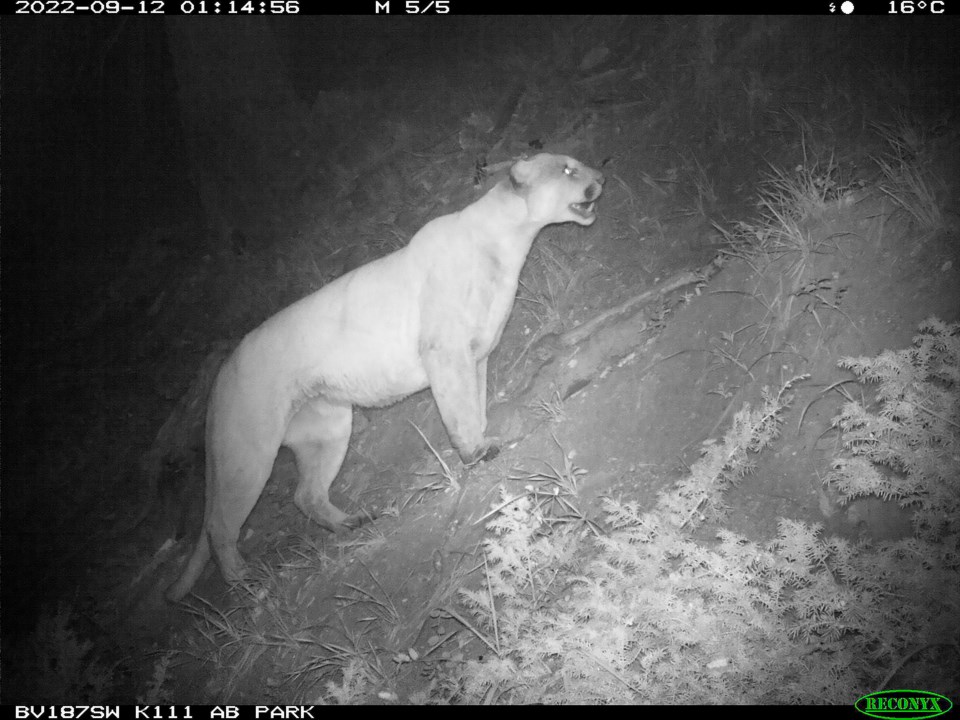CANMORE – A cougar warning will remain in place in Harvie Heights until provincial wildlife officers believe the wild cat has moved on from feasting on a carcass.
Bridget Burgess, a spokesperson for Alberta Parks, said conservation officers found evidence of a cougar feeding on a deer carcass near the Montane Traverse Trail northeast of Harvie Heights on Nov. 21.
She said cougars, which are defensive animals, often stash a carcass and return to it to feed over a period of several days.
“Officers and park staff continue to monitor the area for cougar tracks and signs,” said Burgess. “The warning will be removed with they determine the cougar is no longer in the area.”
Cougars are active in the Bow Valley year-round, but the winter months from December through March see some of the highest cougar activity in the Canmore region because of the concentration of elk and deer closer to town.
Attacks on humans are extremely rare because cougars do not typically see people as prey. Only one person has been killed by a cougar in Alberta – and that was Canmore’s Frances Frost while she was cross-country skiing in Banff National Park in 2001.
According to a provincial report, there were 381 cougar occurrences from 2000-18 within the Bow Valley, stretching from the east boundary of Banff National Park to the Kananaskis River – and 284 of these occurred within Canmore.
In the report, 201 occurrences were in residential areas, again mostly in Canmore. Hotspots of cougar activity include both sides of the valley, including Eagle Terrace and Cougar Creek on the north side and the Peaks of Grassi and Rundleview neighbourhoods on the south side.
A cougar occurrence could be anything from a cougar passing through a residential area, preying on wildlife or feeding on a carcass, to attacks on dogs or getting close to people.
Of all the occurrences, there were only nine occasions that involved cougars approaching, following, or acting in a threatening manner toward a person, but did not result in the cougar chasing or charging the individuals.
There were, however, two instances where cougars did chase or stalk people, according to the report. One was a hunter and the other was a young boy in town, but the cougars ended up fleeing and did not attack in either instance.
In 2011, two young habituated cougars were destroyed near Bow Valley Provincial Park after one of them, a young male, attacked a young girl near Barrier Lake.
The cougar's sibling was also destroyed that summer following several close distance approaches with people in the Canmore area.
There have been other close cougar encounters in Canmore in the years following the study. More recently, in October last year, a cougar followed two hikers and their dog at close range for about one kilometre from the Highline Trail to a residential neighbourhood in Three Sisters around dusk – an active time of day for cougars – and came to within about 10 metres.
In order to avoid a cougar encounter, Burgess said people are encouraged to travel in groups, make lots of noise to alert cougars of their presence, leave the area if they see or smell a dead animal that a cougar may be feeding on and keep dogs on leash.
“Albertans should remain vigilant when exploring our provincial parks and recreation areas,” she said.
Cougar sightings can be reported to 403-591-7755.



